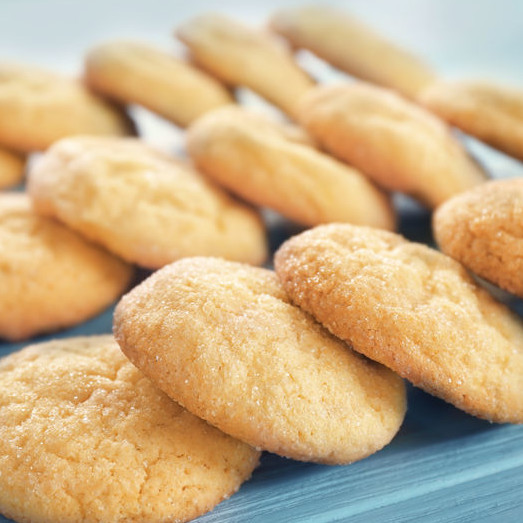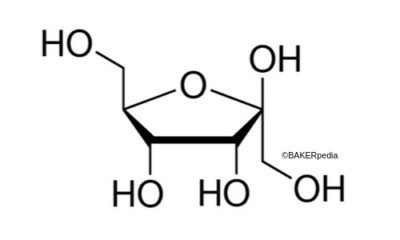
Allulose
What is Allulose?
Allulose is a novel reduced-calorie sweetener for the food and beverage industry. It is a ketohexose monosaccharide with the scientific name D-ribo-hexulose, or just D-psicose.
- It is about 70% as sweet as sucrose.
- It provides only 10% as many calories as sucrose (0.4 calories per gram).1,2
Origin
Allulose is a unique sugar molecule that comes from natural sources. Wheat, brown sugar, caramel, figs, maple syrup, caramel sauce, molasses, and raisins all contain small amounts of psicose.1,2

Commercial production
Since extracting this carbohydrate from natural sources is very expensive and impractical, large-scale production is done by enzymatic conversion processes. Fructose is used as the starting raw material. The industrial production of D-psicose involves a bioconversion from D-fructose induced by ketose 3-epimerases produced by food-grade microorganisms.3
This ingredient is produced by isomerization of fructose.3 This is similar to D-Tagatose, which is the ketose formed by isomerization of D-galactose and D-fructose isomerization of D-glucose
Function
This sweetener has similar functionality to common sugar. Here are just a few features:
- Browning of crust through Maillard reactions
- Bulking agent
- Freeze point depression
- Cannot be utilized by yeast as food for fermentation
- Fermentation control through osmotic pressure
- Reduced sweetness and less energy than tagatose (92% and 1.5 Cal/g, respectively)
Nutrition and health
This sweetener is nearly calorie-free. This is because the human body can not metabolize it the same way as table sugar. It does not produce a glycemic response, so it doesn’t raise blood glucose or insulin levels. These attributes make allulose a popular choice for people who suffer from diabetes or follow the Keto diet. Some of the sweetener is absorbed in the small intestine. However, it’s not metabolized in the body.1,2
Application
Allulose can be used in yeast- and chemically-leavened baked goods. The following considerations must be taken into account when using this alternative sweetener:
- 100% replacement of table sugar with this ingredient will not provide 100% functionality. In most cases, adjustments will have to be made in order to comply with processing requirements, product characteristics, shelf-life expectations and labeling rules.
- Practical baking trials have shown that allulose functionality is enhanced when used in combination with high-potency sweeteners. For example, sucralose and stevia.
- Sensory factors such as residual flavors or aftertaste should be properly addressed prior to launching products containing this ingredient.
FDA regulation
Allulose is a GRAS substance. The Food and Drug Administration’s latest Draft Guidance report on allulose declaration and Nutrition Facts Label is opening doors for this carbohydrate to be considered an alternative (noncaloric) sweetener.
The government agency is proposing that allulose be excluded from both “total” and “added” sugar declarations on nutrition labels through enforcement discretion. This implies that FDA is still considering all approaches and concerns before making final provisions. This guidance is significant as it marks that the FDA is allowing allulose to not be classified as sucrose on food packaging.4
References
- BeMiller, J.N. “Carbohydrate and Noncarbohydrate Sweeteners.” Carbohydrate Chemistry for Food Scientists, 3rd edition, Elsevier Inc. / AACC International., 2019, pp. 372–399.
- U.S. Food and Drug Administration, FDA Issues Draft Guidance Regarding the Declaration of Allulose on the Nutrition Facts Label https://www.fda.gov/food/cfsan-constituent-updates/fda-issues-draft-guidance-regarding-declaration-allulose-nutrition-facts-label. Accessed 1 September 2019.
- Wenli Zhang, Tao Zhang, Bo Jianga, and Wanmeng Mu. “Biochemical characterization of a D-psicose 3-epimerase from Treponema primitia ZAS-1 and its application on enzymatic production of D-psicose.” Journal of the Science of Food and Agriculture, 2015, Volume 96, Issue 1, pp. 49–56.
- U.S. Food and Drug Administration, Draft Guidance for Industry: The Declaration of Allulose and Calories from Allulose on Nutrition and Supplement Facts Labels https://www.fda.gov/regulatory-information/search-fda-guidance-documents/draft-guidance-industry-declaration-allulose-and-calories-allulose-nutrition-and-supplement-facts. Accessed 1 September 2019.

